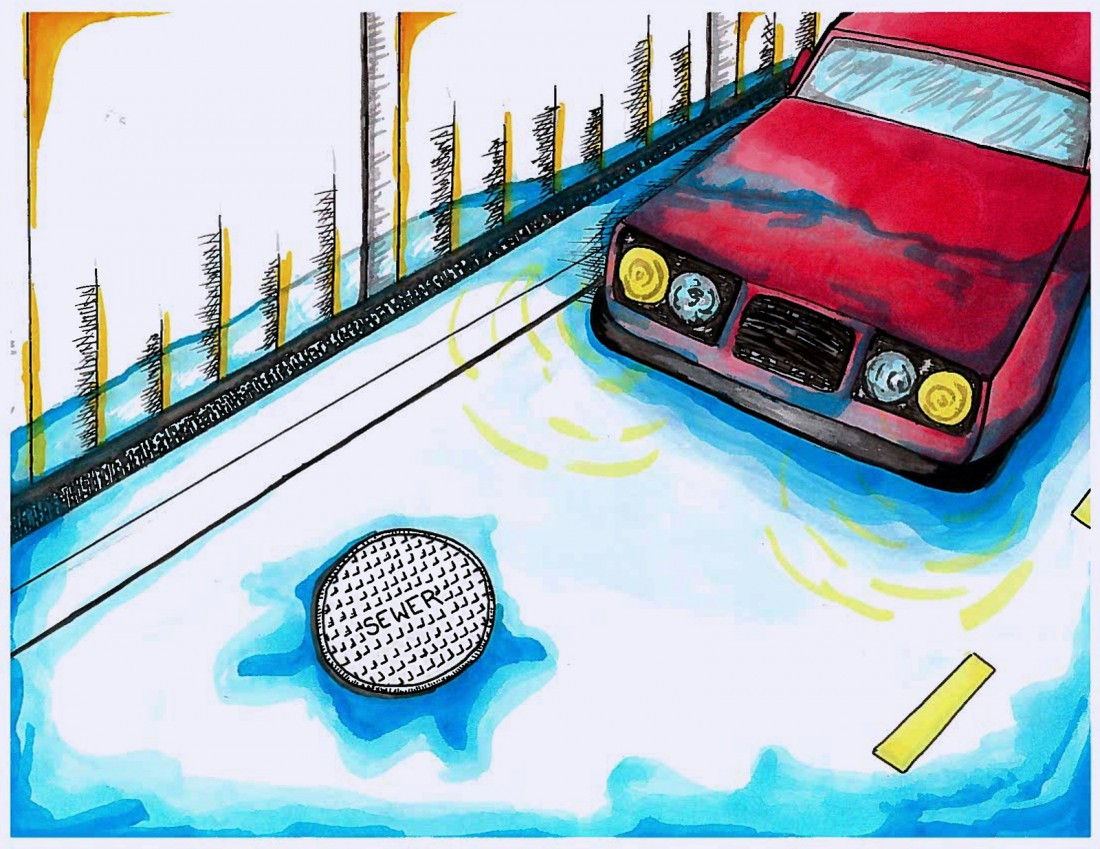Our sewers runneth over
City seeks input on major infrastructure overhaul for sewer system
An upgrade to the sewer system in Winnipeg could possibly put a stop to floods during heavy rainfall and high footage of snowmelt.
Currently, 31 per cent of Winnipeg still runs on Combined Sewer Overflow (CSOs) which is roughly 1,000 kilometres worth of sewers.
Excess water that is not treated and flows into the rivers could result in contamination of our water quality and the environment.
“CSO reduction is not unique to Winnipeg. There are other cities in North America that deal with this same issue,” Duane Griffin, City of Winnipeg Water and Waste employee, says. “Winnipeg is looking to other cities for feedback that are currently going through the same process.”
On Sept. 14 and 15, the City of Winnipeg and the Water and Waste Department hosted a public forum at the West End Cultural Centre discussing Winnipeg’s combined sewer overflow master plan. They discussed changes that could be implemented in the next couple of years. Attendees saw cost differentials, environmental impacts and the amount construction that would be involved with each option.
At the symposium, visitors were shown options under consideration which range in cost from $600 million to $4 billion. A revamp of the sewage system in Winnipeg will result in computer monitoring systems that will detect sewage levels, improve existing pumps, weir walls and possibly separate interceptor pipes for sewage all throughout Winnipeg.
Cities like Edmonton, Ottawa, and Vancouver have the same sewage system as Winnipeg and are also in the midst of upgrading.
Until the 1970’s, the majority of Winnipeg’s sewage and land drainage used to be regulated in a combined sewage pipe which operates well during dry weather, light rain and light snowmelt. However, sporadic heavy rainfall and a copious amount of snowmelt results in too much volume of land drainage and sewage to be filtered and treated at the same time.
Excess land drainage and sewage spill over the weir walls (which are similar to a dam) and travels into the Red and Assiniboine Rivers, which then makes its way down to Lake Winnipeg.
Among others stakeholders, the Winnipeg Chamber of Commerce, Manitoba Eco-Network, and International Institute of Sustainable Development will help and determine the revamping of CSOs, which include the decision making process, meet licence requirements and collective needs.
Public feedback is also welcomed online by the City of Winnipeg till Oct. 5. At the public forum, city officials stated that revamping the sewer system will not make river water consumable, impact fishing, change the colour of the water, or make the rivers safe to swim in.
Published in Volume 70, Number 2 of The Uniter (September 17, 2015)







